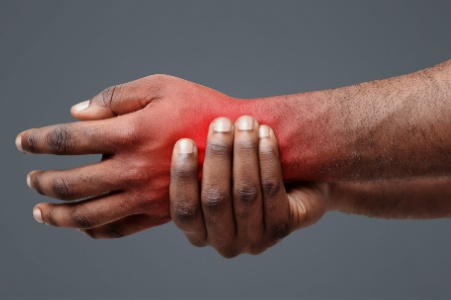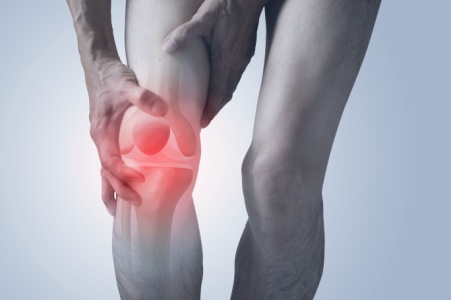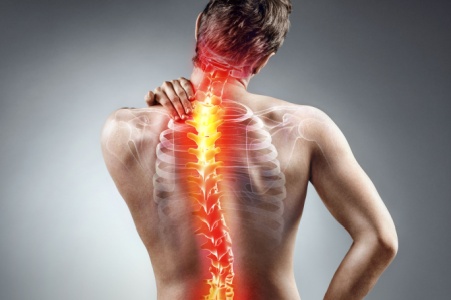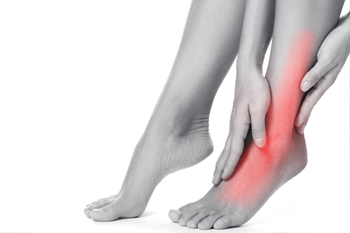Blog
Items filtered by date: July 2025
Carpal Tunnel Syndrome and Chiropractic Solutions

Carpal tunnel syndrome is caused by pressure on the median nerve as it passes through the wrist, leading to tingling, numbness, or weakness in the hand. It can result from repetitive hand movements, wrist injuries, or inflammation. Risk factors include repetitive strain from typing or assembly work, pregnancy, arthritis, and certain medical conditions like diabetes. A chiropractor can help by addressing nerve compression, improving joint alignment, and recommending exercises to reduce strain. They may also advise on ergonomic changes to prevent further injury. If you are experiencing wrist or hand discomfort, early intervention is key, and it is suggested that you visit a chiropractor to relieve symptoms, support healing, and prevent long-term complications.
Carpal Tunnel Syndrome
Carpal tunnel syndrome, or CTS, is a condition caused by compression of the median nerve, which runs through the carpal tunnel in the wrist. This tunnel is a narrow passageway surrounded by bones and ligaments, and when it becomes compressed or inflamed, it can put pressure on the nerve. Symptoms of CTS include tingling, numbness, weakness, and pain in the hand and fingers, often making simple tasks difficult and uncomfortable.
Chiropractic care offers a non-invasive approach to managing CTS by addressing alignment and reducing nerve pressure. Chiropractors start by evaluating the wrist, elbow, and even the cervical spine or neck, as misalignments in these areas can contribute to nerve compression in the wrist. Through gentle adjustments, chiropractors can improve the alignment of the wrist and spine, helping to reduce the pressure on the median nerve.
In addition to adjustments, chiropractors may use soft tissue therapy, such as stretching and myofascial release, to reduce inflammation surrounding the wrist and enhance mobility.
Why Consider Chiropractic for CTS?
Chiropractic care can provide lasting relief by targeting the root causes of CTS, reducing pain, and promoting long-term hand and wrist health.
Can Chiropractic Care Address Repetitive Strain as a Cause of CTS?
Chiropractic care can help manage repetitive strain by improving joint alignment and recommending ergonomic adjustments.
If you have any questions, please feel free to contact our office located in Hammonton, NJ .
Chiropractic Care May Provide Relief From Mid-Back Pain

Mid-back pain can result from poor posture, muscle strain, spinal misalignment, or conditions such as herniated discs and arthritis. Symptoms often include stiffness, aching, sharp pain, or discomfort during movement. Risk factors include sedentary lifestyles, improper lifting techniques, obesity, and repetitive motions. A chiropractor can help by identifying the underlying cause through a thorough evaluation and offering hands-on adjustments to realign the spine and relieve tension. They may also recommend exercises and lifestyle changes to prevent future episodes. If you are struggling with mid-back pain, it is suggested that you seek the expertise of a chiropractor to restore mobility, reduce pain, and improve your quality of life through natural, drug-free care.
Mid back pain, centered in the thoracic region, refers to discomfort or stiffness in the upper and middle back, which connects to the ribcage. This area is essential for stability and movement, but poor posture, repetitive strain, or injuries can cause irritation and tension. Pain may range from a dull ache to sharp, localized discomfort that worsens with certain movements or prolonged sitting.
Chiropractors take a thorough approach to managing mid back pain, identifying misalignments or tension in the thoracic spine that may contribute to discomfort. Spinal adjustments, tailored to improve alignment and relieve pressure, form the core of treatment. Supporting therapies like guided exercises, posture correction techniques, and ergonomic recommendations are also employed to enhance recovery and prevent future issues. Chiropractic care helps restore balance and function, allowing patients to move freely and live without pain.
1. Can carrying a heavy bag or backpack cause mid back pain?
Yes, uneven weight distribution from a heavy bag can strain the thoracic spine and surrounding muscles, leading to pain. Chiropractors can help correct alignment and recommend strategies to reduce strain.
2. How can chiropractic care help desk workers with mid back pain?
Chiropractors address postural imbalances and spinal restrictions caused by prolonged sitting, using adjustments and ergonomic advice to relieve pain and prevent recurrence.
For additional information, please contact our office located in Hammonton, NJ .
Chiropractic Care and Knee Pain

Knee pain is a common condition that can limit movement and interfere with daily activities. It may result from arthritis, which causes joint inflammation and stiffness, bursitis, the irritation of small fluid-filled sacs cushioning the knee, or tendinitis, where tendons become inflamed due to overuse or injury. These issues can lead to swelling, discomfort, and reduced mobility. A chiropractor can help by improving alignment, reducing joint stress, and promoting natural healing through targeted adjustments and rehabilitative exercises. If knee pain is slowing you down or impacting your lifestyle, it is suggested that you schedule a consultation with a chiropractor who can offer a gentle and effective approach to relieve pain and support long-term joint health.
Knee Pain
Knee pain is a frequent complaint that can arise from injuries, overuse, arthritis, or misalignments in the body. This pain can disrupt daily life, limiting movement and impacting quality of life. Knee discomfort often develops when the body’s structural alignment is off, which places extra strain on the knee joint and surrounding muscles and ligaments.
Chiropractic care focuses on reducing knee pain by assessing and addressing alignment throughout the lower body. Gentle adjustments may be used to realign the knee and correct imbalances in the hip, pelvis, and spine that contribute to excessive knee stress. Restoring alignment in these areas can relieve pressure on the joint, ease pain, and promote improved mobility.
To support these adjustments, chiropractors often incorporate exercises, stretches, and lifestyle guidance to improve strength and flexibility around the knee. Strengthening muscles surrounding the joint can offer additional stability, helping to prevent future injuries.
Is knee pain treatment going to be painful?
Patients may worry that adjustments or other treatments will hurt. Chiropractors reassure patients that the techniques used are generally gentle, with any discomfort being mild and short-lived. They work within the patient’s pain tolerance.
How many sessions will I need?
Frequency and number of sessions depend on the pain’s severity and the patient’s response to treatment. Chiropractors often suggest a treatment plan tailored to the individual, sometimes starting with frequent visits and tapering as improvement occurs.
If you have any questions please feel free to contact our office located in Hammonton, NJ .
Chiropractic Support for Scoliosis Pain

Scoliosis is a sideways curve in the spine that can cause pain, stiffness, and uneven posture. While chiropractic care does not reverse the curve, it can help manage the discomfort that often comes with it. Gentle spinal adjustments may improve mobility and reduce muscle tension around the spine. Chiropractors also focus on improving balance and alignment to ease strain on the back, hips, and legs. Treatment plans may include stretches and exercises that strengthen the muscles supporting the spine. Many people with scoliosis find that regular chiropractic care helps them move more comfortably and stay active. If scoliosis pain is making daily activities harder or limiting your movement, it is suggested that you contact a chiropractor to explore supportive and noninvasive treatment options.
Back pain
Finding Lasting Relief for Back Pain Through Chiropractic Care
Back pain is one of the most common issues people face, often caused by poor posture, muscle strain, or spinal misalignment. This pain can range from a dull ache to sharp, debilitating discomfort, affecting daily life and mobility. Chiropractic care offers a non-invasive, drug-free approach to managing and relieving back pain by addressing its root causes.
Chiropractors assess spinal alignment and look for areas of tension, misalignment, or restricted movement that may contribute to back pain. Using targeted spinal adjustments, chiropractors help realign the vertebrae, relieving pressure on nerves, and reducing inflammation. These adjustments encourage natural healing, reduce muscle tension, and improve overall spinal function, which can lead to lasting relief.
In addition to adjustments, chiropractors often recommend exercises to strengthen core and back muscles, supporting proper posture and spinal alignment. They may also offer guidance on adjustments for daily activities to prevent further strain. Lifestyle recommendations, such as stretches, proper lifting techniques, and movement tips, help patients maintain a healthy back.
How Often Should I See a Chiropractor for Lower Back Pain?
Frequency depends on the severity of pain, but many patients benefit from regular visits to maintain alignment and pain relief.
Why Choose Chiropractic Care for Back Pain?
Chiropractic care provides a comprehensive approach to managing back pain, promoting long-term relief and better spinal health without reliance on medications. Regular visits can lead to improved mobility, reduced pain, and a healthier, more active life.
How Quickly Can I Expect Relief from Back Pain with Chiropractic Care?
Relief varies, but many patients experience reduced pain and improved function after just a few sessions
If you have any questions, please feel free to contact our office located in Hammonton, NJ .
How Chiropractic Care Can Help Foot Pain

Foot pain can affect various areas and may signal different underlying issues. Generalized toe pain might stem from arthritis or nerve compression, while big toe pain is often linked to gout or bunions. Pain in the ball of the foot, known as metatarsalgia, can result from pressure, poor footwear, or repetitive impact. Each area of the foot plays a vital role in movement and balance, so pain can impact daily function. A chiropractor can help by improving joint alignment, reducing inflammation, and easing nerve tension through targeted adjustments and soft tissue therapies. If foot pain is interfering with your mobility or comfort, it is suggested that you consult a chiropractor to discover natural, effective relief, and improve overall foot function.
Foot pain is a common problem that can stem from various causes, such as overuse, injury, or conditions like plantar fasciitis and flat feet. It may present as sharp, aching, or throbbing sensations, often making daily activities like walking or standing uncomfortable. Poor alignment of the foot and ankle can lead to additional strain on surrounding muscles and joints, worsening the problem. Left untreated, foot pain can interfere with mobility and overall quality of life.
Chiropractors take a holistic approach to addressing foot pain. By assessing posture, gait, and foot structure, they can identify underlying imbalances contributing to discomfort. Treatment often includes gentle joint adjustments to restore proper alignment, soft tissue therapies to ease tension, and custom exercises to strengthen the affected area. Chiropractic care aims to resolve the root causes of foot pain and improve function naturally.
1. How does foot pain relate to issues in the back or hips?
Foot pain can often be a symptom of biomechanical issues higher up the kinetic chain, such as misalignments in the hips or lower back. Chiropractors assess these connections to treat the root cause.
2. Do chiropractors treat conditions like plantar fasciitis differently from podiatrists?
Chiropractors focus on whole-body alignment, addressing how foot pain may stem from or contribute to imbalances in the spine or posture, complementing podiatric approaches.
3. Can chiropractic care improve my walking or running gait?
Yes, by correcting misalignments and improving joint function, chiropractic care can enhance gait mechanics, reducing strain and preventing future foot pain.
If you have any questions please feel free to contact our office located in Hammonton, NJ .
